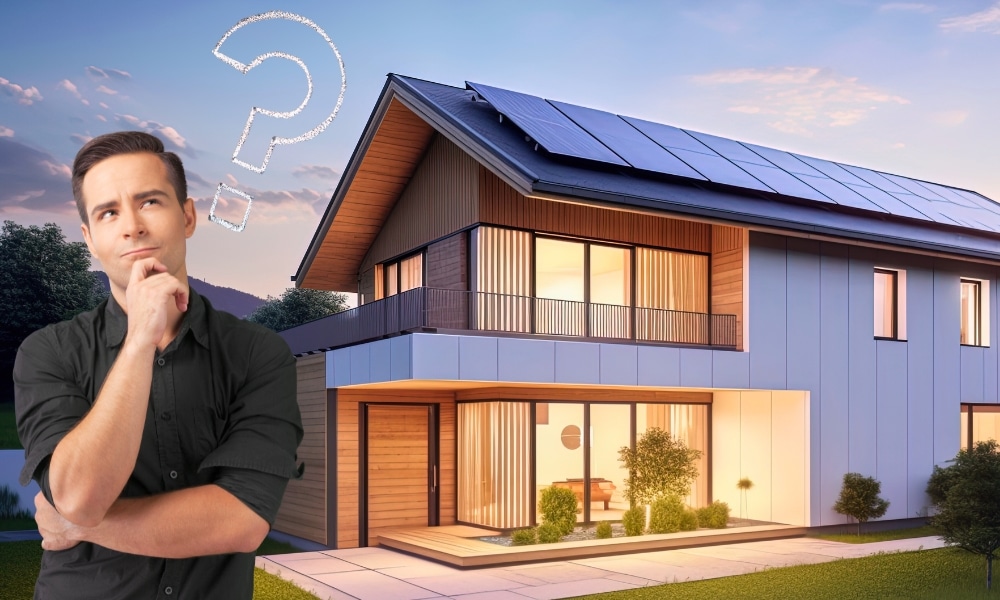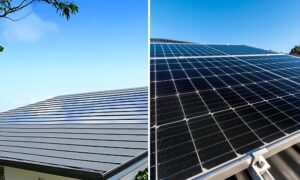As residential solar power becomes increasingly popular in Australia, homeowners face a critical decision: should they opt for an off-grid or grid-tied solar system?
Understanding these systems’ differences, advantages, and disadvantages is essential for making an informed choice. This article delves into a comprehensive solar system comparison, examining off-grid and grid-tied solar systems to help determine which is best suited for your home in Australia.
Understanding off-grid solar systems
An off-grid solar system is entirely independent of the traditional electricity grid. It generates, stores, and provides electricity to your home without relying on external power sources. This system is ideal for remote locations where grid connection could be more practical and affordable. Here’s how it works:
- Solar panels: These solar panels capture sunlight and convert it into electricity.
- Charge controller: This device regulates the voltage and current from the solar panels to prevent battery overcharging.
- Batteries: Energy is stored in batteries for use during cloudy days or at night.
- Inverter: The stored DC power is converted into AC power, which household appliances can use.
Ready to upgrade your solar systems and take your energy savings to the next level? Embrace the energy efficiency revolution by upgrading your solar systems and adding a battery or solar inverters with Energy Matters.
With Energy Matters’ 3 free solar quotes, you can compare plans from pre-qualified and vetted installers in your area and find the perfect solution for your home and business. Harness the sun’s power and save money on electricity bills while reducing environmental impact. Let Energy Matters guide you towards a brighter, more sustainable future.
Pros of off-grid solar systems
- Energy independence: With off-grid solar systems, you are entirely independent of utility companies. This means you’re not affected by grid outages or rising electricity costs.
- Ideal for remote locations: Off-grid systems are perfect for homes in remote or rural areas where connecting to the grid is impossible or prohibitively expensive.
- Environmental impact: By relying solely on solar power, off-grid systems reduce your home’s carbon footprint, contributing to a greener planet.
Cons of off-grid solar systems
- High initial costs: Off-grid solar systems require a significant upfront investment, mainly because they need a large battery bank and other components.
- Maintenance and monitoring: You are responsible for maintaining the system, including monitoring battery levels and ensuring components function correctly.
- Energy storage limitations: Your batteries’ capacity limits how much energy you can store, which may require careful energy management during extended cloudy periods.
Use Energy Matters’ easy-to-use solar power and battery storage calculator to determine the size of your solar system with storage! Our solar calculator will generate performance information and potential savings.
Energy Matters can send this information to 3 of our pre-vetted and trusted local installers in your area to receive obligation-free solar quotes.

Read more about:
- Getting Started with Stand Alone Solar Power Systems – an Off-Grid Solar System
- Off-Grid Solar Power: How it Works
- Off-grid solar power components
- Essential Tips for Maintaining and Troubleshooting an Off-Grid Solar System in Australia
- Off-Grid Solar System Cost in Australia
Understanding grid-tied solar systems
Grid-tied solar systems are connected to the traditional electricity grid. This setup allows you to use solar power when available and draw from the grid when necessary. Here’s how a typical grid-tied system operates:
- Solar panels: Like in off-grid systems, solar panels capture sunlight and convert it into electricity.
- Inverter: The DC power generated is converted into AC power for household use.
- Electricity meter: This measures the electricity you draw from and feed back into the grid.
- Grid connection: When your solar panels produce more electricity than you need, the excess is fed back into the grid, often earning you credits on your utility bill (a process known as net metering).
Pros of grid-tied solar systems
- Lower initial costs: Grid-tied solar systems are generally less expensive upfront since they don’t require a large battery bank.
- Access to grid power: You can draw power from the grid during periods of low solar production, ensuring a consistent energy supply.
- Reduced carbon footprint: Like off-grid systems, grid-tied systems also reduce carbon emissions, though the impact may be slightly less if grid power is used.
- Financial incentives: Many Australian states offer feed-in tariffs or incentives for the excess power your grid-tied system sends back to the grid, potentially lowering your electricity bill.
- Backup power: If a battery backup system is installed, grid-tied systems can provide backup power during power outages.
Are you ready to transform the way you power your household? Say goodbye to rising electricity costs and unpredictable energy grids. The state-of-the-art solar battery systems empower you to maximise energy efficiency, save money, and reduce your carbon footprint while enjoying an uninterrupted power supply.
Let us discuss and choose the best quote that suits your needs and budget. We can connect you with our trusted local solar installers, who will provide up to 3 FREE quotes for your home battery system.














































